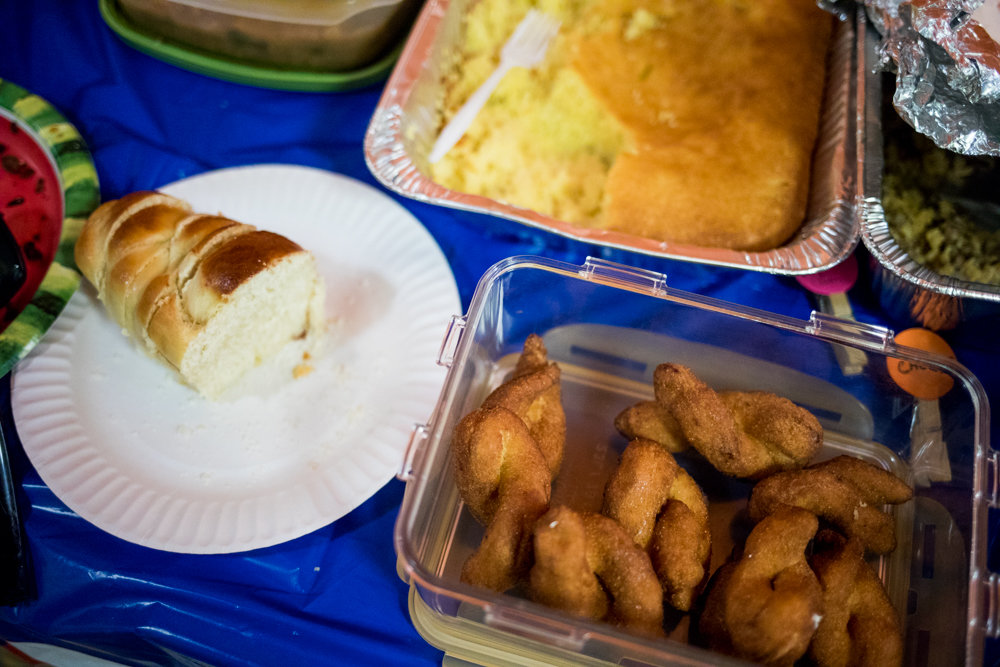BedRock Preschool plays its way around the world
Long before young adults pore over dry textbooks and cram for tests, they are children who learn about the world through play.
In March, BedRock Preschool celebrated world cultures where teachers encouraged children to dress up in the traditional clothing of their family’s ethnic heritage. Students and parents also sampled a smorgasbord of international foods, like pakoras, mofongo, seaweed snacks, English biscuits and sofritas.
Teachers at the preschool believe strategic play builds foundational knowledge onto which a solid education is built.
Children are developing so fast during their pre-K years,” said Mego Gojka, managing director of the Arlington Avenue school. “We have a creative curriculum that really engages the children at the most crucial time of their development.”
Matt McGuire’s class, for example, sets aside time to learn academic skills like simple math and basic sight words. But an integral part of class is devoted to learning by doing. What looks like a bunch of kids being kids is actually an important learning activity where they gain functional skills through activities or dividing into small groups to tackle different topics.
Sharing toys or coaching students through conflict resolution hones social and emotional skills.
“Children at 2, 3 and 4 years old learn through play,” McGuire said. “That’s what this program is all about.”
And for teachers like McGuire, what better way to introduce kids to the seemingly endless amount of diversity in the world than through exotic tastes, fun clothes and lively music. McGuire’s students learned about Mexico through images most often associated with the country like exotic fruits, beautiful flowers, volcanoes and traditional musical instruments. From there, the lessons branch off into horticulture, agriculture, geology and musical anthropology.
The lessons also show kids the common threads that bind everyone together. People of every country — no matter how remote — celebrate birthdays, wear fancy clothes for special occasions, and sing lullabies.
“We have these different cultural activities to interweave the message that we’re all from different backgrounds,” McGuire said, “but deep down, we’re all the same,”
Kids learned about Australia in Leslie Wallace’s class, discussing how because the country lies in the southern hemisphere, the seasons are opposite to those in the United States. Students learned about the aboriginal people of the continent, the English colonization, and how traditions of both cultures developed together.
Lessons incorporated songs, traditional foods and games.
“They love learning about the culture and how people can play together, sing together, eat together and be a community,” Wallace said.
For the celebration, teacher Olubukola Adesida wore traditional dress from her native western Nigeria. It included the traditional headwrap — called a gele — a brightly patterned top, called a buba, and a garment tied around the waist called an iro. She taught the children the proper way to tie the gele, offering them a variety of different fabric pieces to wear.
“I also set up a little store so the children can buy fabrics,” Adesida said. “If they want to buy a half a yard, I have them look at the price for a yard and have them tell me how much it would cost. That teaches them about math and fractions.”
Fabrics play an important part in a culture, Adesida said. She taught students that different parts of the world use different fibers to make their clothes depending on the weather in their region.
In warm climates, the fiber is light and the material is thin. Colder areas traditionally feature heavier materials to retain warmth.
Children also learned the colors of fabric say much about a people and their native lands. Adesida’s traditional dress was resplendent with bright hues and energetic patterns. Some other cultures of the world have more muted tones.
Before the advent of artificial dyes, people used plants and other natural pigments. And because there is such diversity in flora and fauna globally, different people used different substances to color their fabrics.
Learning small details about the daily lives of other cultures sparked the childrens’ curiosity. It also teaches them that all people have the same fundamental needs, Gojka said.
The annual multicultural celebration invites children to continue exploring the wide and diverse world they live in.
“And,” Gojka said, “getting them excited about learning now will guide them for the rest of their lives.”






